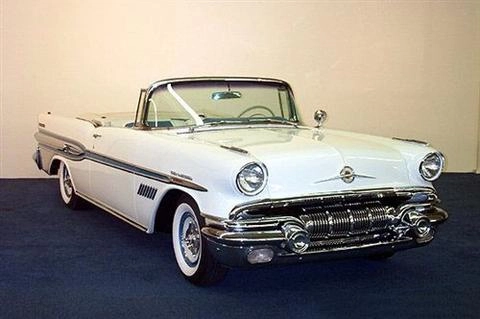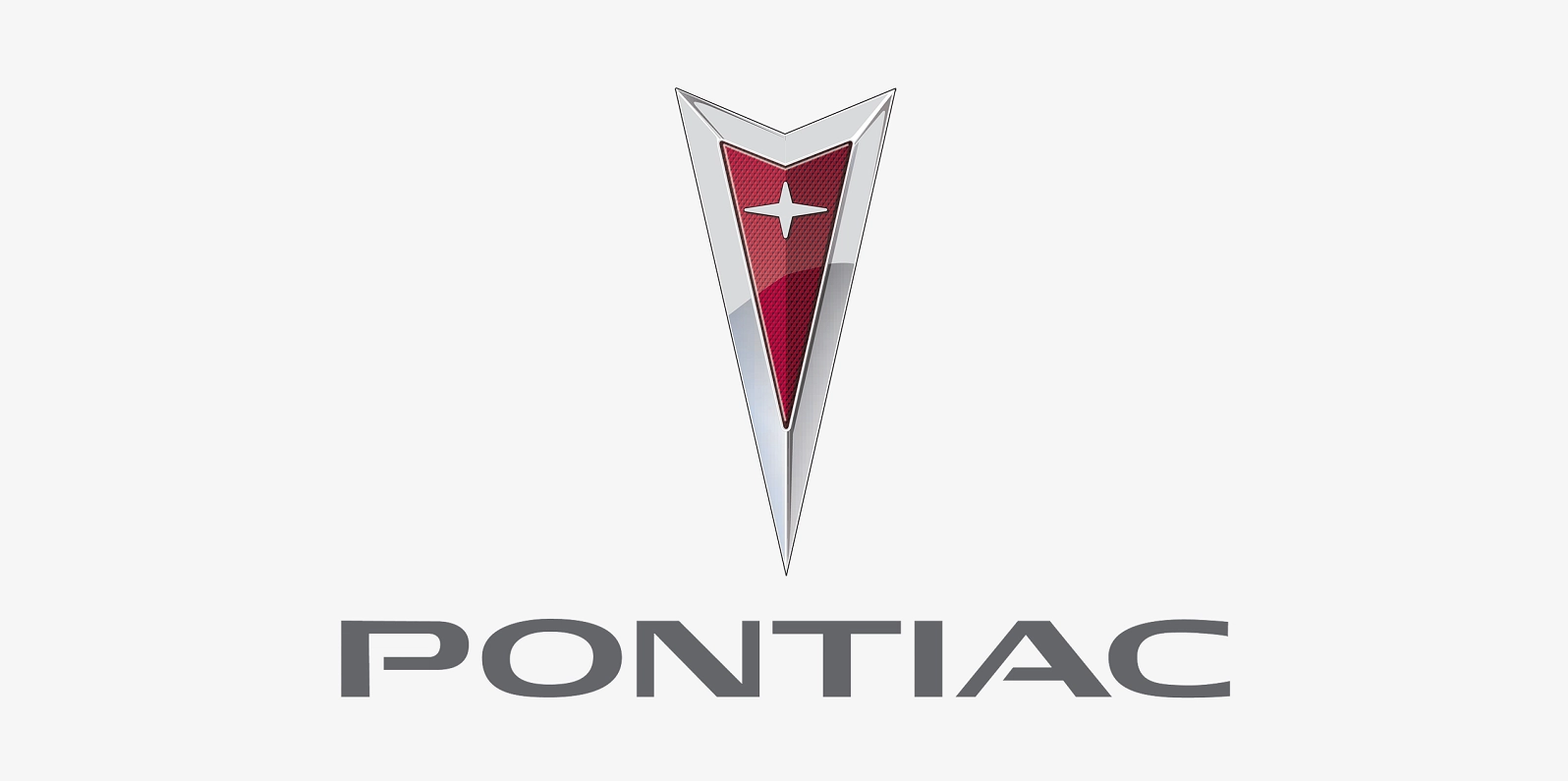Mid-term development of the Pontiac brand
Establish the development direction of sports performance vehicles and gradually mature.

In 1956 Semon Knudsen became the new leader of the Pontiac division. He began to establish Pontiac’s development towards mid- to high-end sports cars, not only canceled the logo of the Indian head but also launched the limited high-performance convertible of Bonneville for Star Chief, which was sold at 5800 Dollar. At the time, $5,800 was enough to buy a Cadillac, but Bonneville’s limited-edition high-performance convertible was still popular.

By 1957, Bonneville became the independent car model of Pontiac. It is no longer a limited edition of Star Chief. It is powered by a 6.1L V8 engine with a maximum power of 300 hp (220 kW). The power showed the people at the time that Pontiac is not only a reliable car but also a high-performance sports car. At the beginning of this series, there were mainly open-top and sports car series, and later there were a four-door sedan and travel version. This car model has been produced until 2005, and it has produced 11 generations.

In the Star Chief model launched in 1959, Pontiac got a new arrow-type logo, not only that, but also the front grille, body shape, and interior have been completely redesigned, replaced with 4 headlights and longer body size. By 1960, the Pontiac model had sold nearly 400,000 cars, of which Light Bonneville sold 70,000 units. At that time, Pontiac’s main sales car models reached 16 models, including Catalina, Star Chief, Bonneville Bonneville, and Ventura.
Among them, Ventura used a model produced by the GM B platform in 1960 (the same platform as Catalina), mainly including a four-door sedan and two-door hard-top sports car. It has been in production until 1977, and the power is mainly equipped with 4.1L inline six-cylinder and 5.0L, 5.7L V8 engine. At that time, the models of Pontiac would launch corresponding sports cars or roadsters, which also laid a foundation for the development of high-performance sports cars.

In 1961, although the full-size body was still the mainstream in the market, the mid-size car with a shorter body, lighter weight, and more fuel consumption began to be popular. General Motors has launched mid-size cars in its brands, including Buick Skylark, Oldsmobile’s F-85 and Cutlass. At the same time, the Pontiac Tempest on the same platform as these three models was officially launched. Pontiac Tempest has launched four models, four-door travel, four-door sedan, two-door coupe, two-door convertible. From mid-size cars, Pontiac models are also equipped with in-line four-cylinder engines, as well as an independent rear suspension system.

At the end of 1961, Pontiac also launched a more sporty sports car based on the Pontiac Tempest body structure, named Pontiac LeMans (Le Mans). At the time, its launch was mainly for the production of two-door sports cars or convertibles. The power was also equipped with the Pontiac Tempest series of 3.2L inline four-cylinder engines. Of course, this car model is called “Le Mans” and naturally has a close relationship with the famous event, 24 Hours endurance race of Le Mans in French. In 1963 Pontiac added a V8 engine to the model and modified the performance. The modified car model became the heavyweight killer on the Nasca and Le Mans. At the end of 2008, the model was auctioned which valued $226,521.
Brand development enters the peak
The launch of many muscle cars has become the pillar of brand development
In 1961, Pontiac’s former general manager Knudsen moved to work in Chevrolet, and Pontiac was led by Estes. After the appointment of Estes, he continued to lead the Pontiac brand to the development of sports performance cars. Since the American muscle car began to enter the stage of rapid development, Pontiac joined the horsepower battle of the muscle car in the 1960s. In 1962, the first Grand Prix was introduced, and in the early days, it was a two-run coupe derived from the Catalina and Bonneville cars. Equipped with a V8 engine, the engine has a displacement of 6.4L/6.6L/6.9L/7.0L. Later, in 1970, it also introduced a 7.5L V8 engine car mode with a maximum output of 410 hp (302 kW), and the maximum torque reached 680 Nm. It was absolutely a super sports car at that time.

By 1964, the famous Pontiac GTO was launched. Before 1964, the muscle cars were full-size hardtop coupe or sedan. They were characterized by a large size body and large displacement engines. But the car enthusiasts at the time felt that the engine was powerful and the body had to be lighter and smaller to make the car run faster. So some players will modify the engine and other parts in their garage. It is for this reason, the Pony Muscle Car has also begun to be popular from this period. And in 1964, Pontiac’s competitors such as Ford and Dodge have also begun to launch small muscle cars (the Ford Mustang was launched in 1964).

The launch of the Pontiac GTO in 1964 met the needs of car enthusiasts at the time. The Pontiac GTO, which was launched at the time, actually added a GTO kit for $295.90 to the 1964 Pontiac Tempest and LeMans models. The kit includes a 6.4L displacement 325 hp V8 engine, Carter 4 hose carburetor, rear-wheel drive, hydraulic camshaft, manual 3-speed transmission, heavy-duty clutch, heavy-duty suspension, Double exhaust pipe, US Royal red tire, twin-engine air intake, and GTO badge. With this equipment, the GTO’s acceleration time of 0-100 km/h in 1964 reached 6.6 seconds. At the time, the GTO was popular with people and became one of the most representative models in street racing. At the end of 1964, the sales volume of GTO reached 325,450 units. By 1966, the sales volume of GTO had reached nearly 100,000 units. In 1966, the Pontiac GTO was also separated from the “Tempest” car series, becoming an independent performance car series.

In 1967, another Pontiac car, the Pontiac Firebird, was launched. The manufacture of this model is based on the Chevrolet Camaro platform and is designed to meet the challenges of the Ford Mustang and Mercedes-Benz cougar. The model was produced based on the Chevrolet Camaro Camaro platform to meet the challenges of the ford mustang and Mercury Cougar, etc. In terms of power, this model is equipped with 3.8L six-cylinder, 5.3L eight-cylinder, 5.7L eight-cylinder, and 6.6L eight-cylinder four engines. The most powerful 6.6L eight-cylinder engine has a power of 325 hp (242 kW).

In 1969, under the leadership of John DeLorean, then General Manager of Pontiac, the second-generation Grand Prix began to turn to the universal, smaller, and lighter G platform. In addition to the compact body and lighter weight, the Grand Prix’s interiors and equipment have also been greatly improved and increased. It officially embarked on the road of luxury and sports, and officially began to compete with Ford’s Thunderbird for a long time. By the end of the 1960s, Pontiac’s main sales models included Pontiac Tempest Storm, LeMans Le Mans, GTO, Firebird, Ventura, Bonneville, Catalina, Grand Prix, etc. In 1969, Pontiac’s model sales reached 140,000 units, ranking third in the United States at that time.

